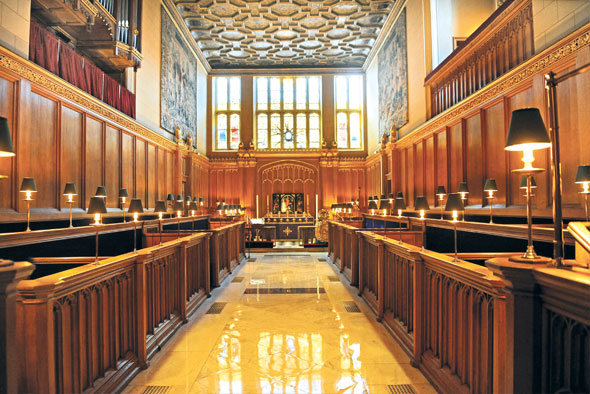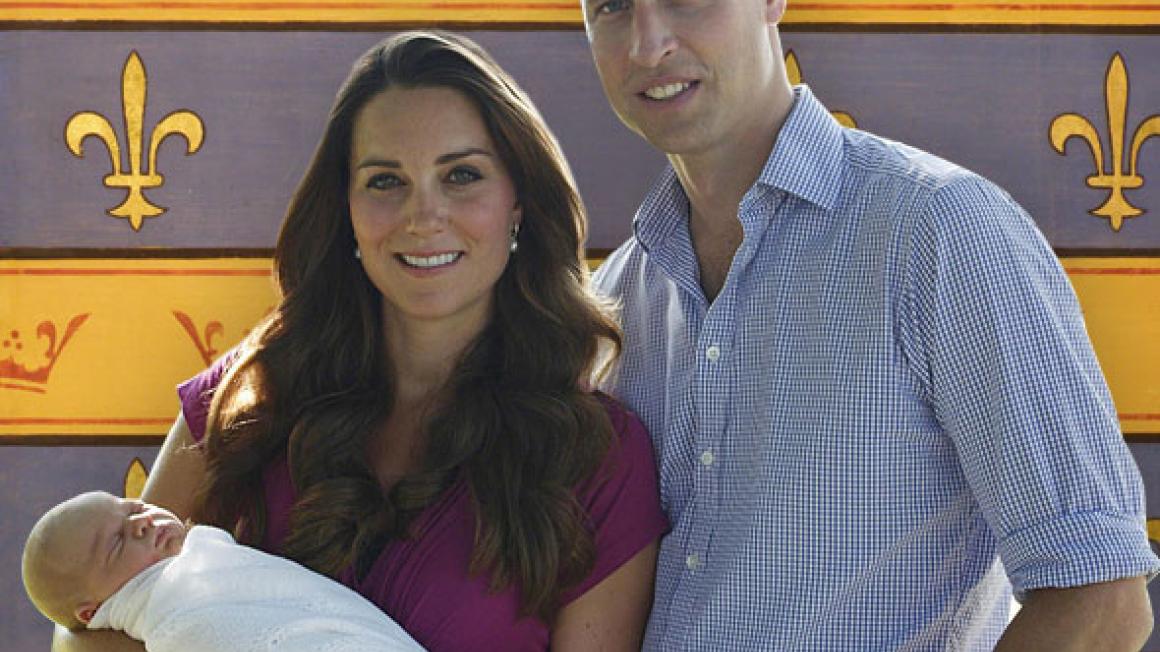A VERY PERSONAL AFFAIR
In March 2011, a few weeks before she and William were married, it was at the Chapel Royal that the then Catherine Middleton was confirmed into the Church of England by the Right Reverend Richard Chartres, Bishop of London. A personal friend of Prince Charles, the bishop had also confirmed Prince William, then a 14-year-old, at Windsor.
More significantly, the Chapel Royal, where Purcell and Handel were once organists and where gold, frankincense and myrrh are offered on the Queen’s behalf each year at Epiphany, was also where the coffin of Diana, Princess of Wales lay before her funeral at Westminster Abbey in September 1997. And that, in all probability, was the most influential factor in the Cambridges’ choice of location for their son’s baptism; William’s way to connect his mother to an important family occasion, one to which only his and Catherine’s closest relations and friends were invited.

As a Royal source was reported to have said when it was disclosed that the baby prince’s great aunts and uncles would not be attending, ‘William and Kate wanted a small, personal and thoughtful service and concluded too many people would spoil it.’
Steeped in history and home to 17 generations of the Royal Family, St James’s is still Britain’s senior Royal palace. Even today it is to The Court of St James’s (not ‘St James’, as some mistakenly refer to it) that foreign ambassadors are formally accredited. Built by Henry VIII on the site of the 11th-century hospital of St James, sanctuary to ‘14 leprous maiden sisters’, it was in 1540 that the Chapel Royal acquired its superbly painted coffered ceiling. Attributed to Holbein and created to celebrate the king’s marriage to his fourth wife, Anne of Cleves, it not only incorporates Henry and Anne’s initials, together with their coats of arms, the Tudor rose and the fl eur-de-lys, but also the emblem of Catherine Howard, whom Henry married five months later, having divorced poor Anne, or ‘the Flanders mare’, as he called her.
Witness to five centuries of Royal ceremonial as well as private devotion, it was beneath the chancel steps that Mary Tudor’s heart is said to have been buried; and it was here that Elizabeth I awaited news of the approaching Spanish Armada, as she prayed for the safety of her realm. Close by, on the winter’s night before he walked through St James’s Park to his execution at Whitehall, Charles I took Holy Communion in the gatehouse adjoining the Chapel. On another winter’s day, almost two centuries later, the young Queen Victoria broke with the established Royal tradition of evening weddings behind closed doors, when she and her beloved Albert chose to be married at the Chapel Royal on a February afternoon in 1840.
From then on it was the location of several more family weddings, including those of Victoria and Albert’s eldest daughter Victoria, Princess Royal to the future German emperor Frederick III; Prince George, Duke of York and Princess Mary of Teck, who later became King George V and Queen Mary and, 100 years ago this month, Prince Arthur of Connaught (the Prince William of his day) and Princess Alexandra, Duchess of Fife.
This week, however, beneath Holbein’s elaborate ceiling, the first Royal christening since that of Princess Beatrice in 1988, was celebrated. Watched by his parents, by the Queen and Prince Philip, his grandparents and six godparents (or ‘sponsors’ as they are known in Royal circles), George Alexander Louis was formally received into the Church of England by the Most Reverend Justin Welby, officiating at his first Royal baptism since becoming Archbishop of Canterbury earlier this year. Standing beside the magnifi cent silver gilt lily font, with its border of tumbling water lilies, representative of new life, which Victoria and Albert had commissioned for the baptism of their first child, the baby prince was anointed with water from the River Jordan.
Like his near cousins, James, Viscount Severn, son of the Earl and Countess of Wessex, and Savannah Phillips, the Queen’s first great-grandchild, Prince George was dressed in a christening gown of white satin and lace. Made by Angela Kelly, the Queen’s dresser-designer and her team, it is an exact replica of the robe in which every Royal baby, including Prince William himself, has been christened since Queen Victoria’s first-born in 1841. Last worn by Lady Louise Windsor at her christening in 2004, however, the Queen decided the heirloom had become too fragile for further use.
After the solemnity of the service and the all-important commemorative photographs, it was time for champagne, toasts and slices of the top tier of the Cambridges’ Royal wedding cake. Upstairs in the palace’s crimson-walled staterooms, the christening party doubtless raised their glasses in honour of the infant who, it is anticipated, will one day reign as King George VII.


